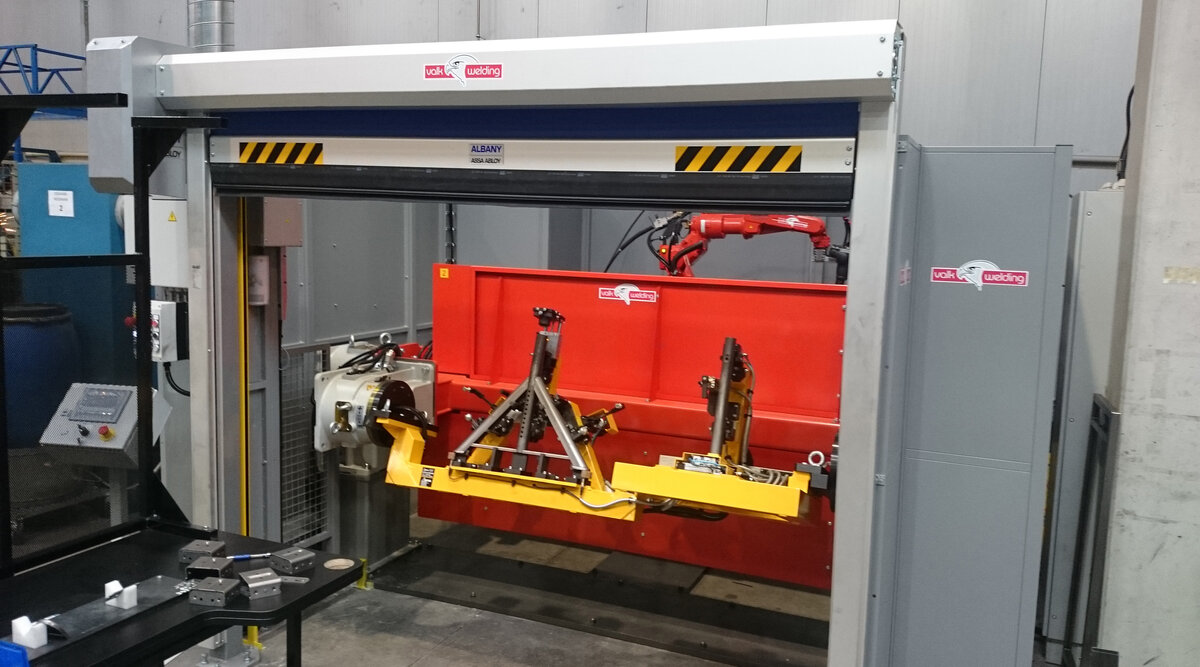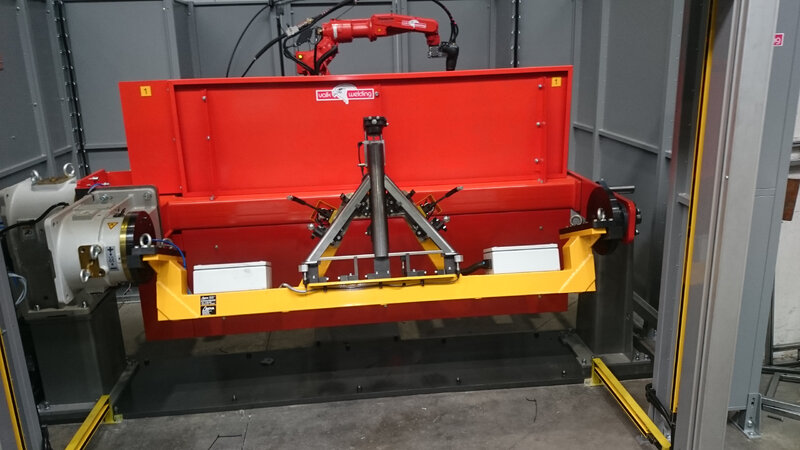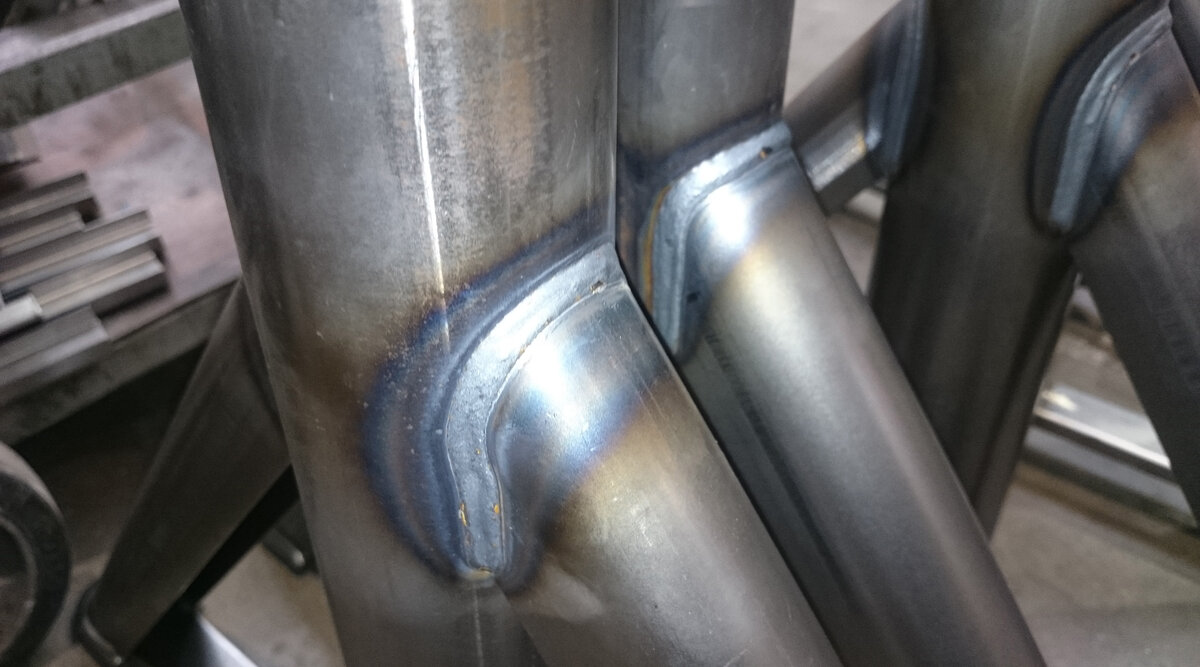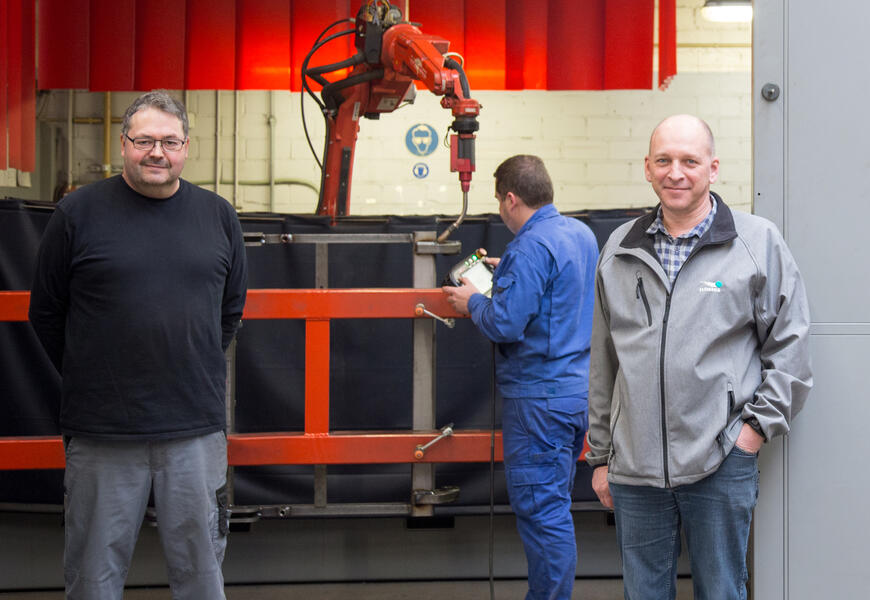Valk Welding -robotit
Perustuen onnistuneisiin hitsaustesteihimme, ostimme ensimmäisen Valk Welding -robottimme vuonna 2016, erityisesti pöytärunkojen tuotantoa varten. "Panasonic TM1600WG3 on varustettu SP-MAG-hitsausteknologialla tätä tarkoitusta varten, mikä mahdollistaa sykliaikojen vähentämisen 25% verrattuna aiempiin robotteihin, samalla kun manuaalinen viimeistelytyö minimoidaan," selittää projektipäällikkö.
Käyttäjäystävälliset ohjaimet
Ensimmäinen hitsausrobottiyksikkö, jossa on kaksi työasemaa, jotka pyörivät maailmanpyöräkonseptin mukaisesti, on erittäin käyttäjäystävällinen kosketusnäyttöohjaimilla. Jopa kokemattomat henkilöt voivat tarkistaa tuotannon tilan milloin tahansa, syöttää tietoja ja käynnistää hitsausrobotin. Zdeněk Luzar: "Tämä hitsausrobottiyksikkö mahdollisti meille sekä vaaditun pöytärunkojen tuotantokapasiteetin saavuttamisen että vaaditun hitsauslaadun noudattamisen. Näiden tulosten perusteella olemme myös suorittaneet hitsaustestejä uuden pöytämallin kehittämiseksi. Hitsaus saumojen ulkonäkö ja onnistuneet rasitustestit johtivat uuteen tilaukseen ja siihen, että tilasimme kolme lisähitsausrobottiyksikköä Valk Weldingiltä."






